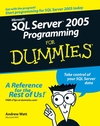作者:Aaron Hillegass
出版日期:May 18, 2008
出版社:Addison Wesley
页数:464
ISBN:ISBN-10: 0-321-50361-9 ISBN-13: 978-0-321-50361-9
文件格式:CHM
Suitable for anyone with a little C/C++ programming experience who wants to create software for the newest Mac platform, Cocoa Programming for Max OS X provides a slickly packaged and approachable tutorial that will get you started creating state-of-the-art Mac programs.
The smart presentation style and easy-to-understood code exampleshelp make this text an excellent resource. (It also helps that AaronHillegass is a truly engaging writer.) He first explains how the legacyNeXTSTEP platform has evolved into Cocoa on the Mac OS X. Beginningwith short examples illustrating the actual Cocoa tools in action, theauthor gets you started with simple programs for a random-numbergenerator, a raise calculator, and other comprehensible examples.Rather than just listing APIs and classes, the emphasis is on hands-onCocoa development. An early standout section provides a nice tour ofessential Objective-C features you’ll need to know to use Cocoaeffectively.
This book covers the several dozen built-in Cocoa controls, frombasic text and buttons to more advanced widgets (including lists andtables). Subsequent sections look at user interface design (using theInterface Builder to create nib files) and how to add programmaticprocessing behind the visual layout. Along the way, the authorintroduces coverage of essential Cocoa APIs for strings, arrays, anddictionaries. Later chapters look at saving and loading documents (anduser defaults) and how to tap the powerful graphics abilities availablein Cocoa. (Besides image and basic drawing, there are short sections onPDF support and printing.)
More advanced user interface features get their due by the end ofthe book, including cutting and pasting data through the Cocoapasteboard and also adding drag-and-drop support. Final sections lookat creating new controls for use with the Interface Builder palette,and, briefly, how to use Java with Cocoa (an option that the authordoesn’t necessarily recommend). Throughout this text, the authorprovides more advanced, challenging problems at the end of each chapterfor the “more curious” reader. This approach keeps beginners fromgetting lost in the details of Cocoa development, but gives the moreadvanced reader something more to do.
While there are comparably fewer books on Mac OS X compared to otherplatforms, readers are lucky to have this one available. Anyone whowants to get onboard with Cocoa development will be well served by thistitle. It’s a fine tutorial that earns high marks for its approachable,clear examples and an excellent presentation by an author who knows hisstuff and, better yet, knows how to teach it to others. –Richard Dragan
Topics covered: Brief history of the Mac platform(from NeXTSTEP to Mac OS X), basic Cocoa development in Objective-C,using Project Builder and Interface Builder tools, tutorial toObjective-C (instances, variables, using classes, arrays and othercontainers, custom classes), the Objective-C debugger, basic Cocoacontrols (building user interfaces), tables and data sources, eventhandling and delegates, archiving documents (encoding and decoding,saving and loading documents), Nib files, window panels, saving andretrieving user defaults (including using dictionary classes),notifications (observers and more on delegates), alert panels,localization (including string tables, a English and French example,the nibtool utility), custom views and drawing, drawing images andmouse events (plus coordinates systems and autoscrolling views),responders and keyboard events, fonts and strings (including attributedstrings and PDF support), pasteboards and nil-targeted actions, usingObjective-C categories (a code reuse feature), drag-and-drop support,timers, sheets and drawers, formatting strings, printing support,on-the-fly menu updating, text editing with text views, basic tutorialfor using Java with Cocoa, and custom Interface Builder palettes (andinspectors). –This text refers to an out of print or unavailable edition of this title.
Product Description
The best-selling introduction to Cocoa,once again updated to cover the latest Mac programming technologies,and still enthusiastically recommended by experienced Mac OS Xdevelopers.
“Aaron’s book is the gold standard for MacOS X programming books—beautifully written, and thoughtfully sculpted.The best book on Leopard development.”
—Scott Stevenson, www.theocacao.com
“This is the first book I’d recommend foranyone wanting to learn Cocoa from scratch. Aaron’s one of the few(perhaps only) full-time professional Cocoa instructors, and histeaching experience shows in the book.”
—Tim Burks, software developer and creator of the Nu programming language, www.programming.nu
“If you’re a UNIX or Windows developer whopicked up a Mac OS X machine recently in hopes of developing new appsor porting your apps to Mac users, this book should be stronglyconsidered as one of your essential reference and training tomes.”
—Kevin H. Spencer, Apple Certified Technical Coordinator
If you’re developing applications for Mac OS X, Cocoa® Programming for Mac® OS X, Third Edition,is the book you’ve been waiting to get your hands on. If you’re new tothe Mac environment, it’s probably the book you’ve been told to readfirst. Covering the bulk of what you need to know to developfull-featured applications for OS X, written in an engaging tutorialstyle, and thoroughly class-tested to assure clarity and accuracy, itis an invaluable resource for any Mac programmer.
Specifically, Aaron Hillegass introducesthe three most commonly used Mac developer tools: Xcode, InterfaceBuilder, and Instruments. He also covers the Objective-C language andthe major design patterns of Cocoa. Aaron illustrates his explanationswith exemplary code, written in the idioms of the Cocoa community, toshow you how Mac programs should be written. After reading this book,you will know enough to understand and utilize Apple’s onlinedocumentation for your own unique needs. And you will know enough towrite your own stylish code.
Updated for Mac OS X 10.4 and 10.5, thisrevised edition includes coverage of Xcode 3, Objective-C 2, Core Data,the garbage collector, and CoreAnimation.






 评论 (0)
评论 (0) 